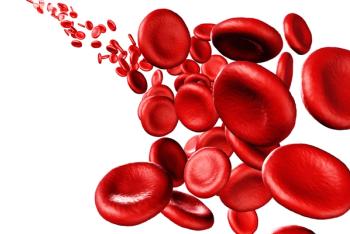
Oncology NEWS International
- Oncology NEWS International Vol 8 No 9
- Volume 8
- Issue 9
Gabapentin as Adjuvant to Opioids in Neuropathic Pain
MILAN, Italy-A small Italian study of gabapentin (Neurontin) in patients with neuropathic cancer pain only partially responsive to opioid therapy suggests that the anticonvulsant may have a role to play in this situation.
MILAN, ItalyA small Italian study of gabapentin (Neurontin) in patients with neuropathic cancer pain only partially responsive to opioid therapy suggests that the anticonvulsant may have a role to play in this situation.
Although the usefulness of gabapentin as an analgesic has been studied in several neuropathic pain syndromes, no report is available at the moment about the use of this drug as an adjuvant analgesic in cancer pain, said Augusto Caraceni, MD, and his colleagues in the Pain Therapy and Palliative Care Division, National Cancer Institute of Milan.
The researchers studied 22 consecutive patients with neuropathic cancer pain that was not completely controlled with opioid analgesics or in whom the opioid dose was limited by side effects. Neuropathic pain was defined as pain due to a peripheral neurologic lesion caused by cancer and included at least one of the following symptoms: burning pain, paroxysmal episodes of shooting pain, or pain with light touch (allodynia).
Global pain and burning pain intensity were assessed on a scale of 0 to 10; paroxysmal pain episodes were quantified as approximate number per day. Allodynia was rated as present or absent after the skin was gently brushed with cotton or lightly stimulated with a finger.
Patients underwent a dose titration period of 3 to 7 days, using 300- or 400-mg gabapentin capsules, to optimize analgesia while keeping the opioid dose stable. Pain and side effects were assessed at baseline and when the patient had reached a stabilized gabapentin dose (at least 3 days without a dose change)after 7 to 14 days of therapy.
The mean daily gabapentin dose was 1,004 mg (range, 600 to 1,800 mg), while the mean opioid daily dose was 147 mg (range, 20 to 900 mg). In all patients, opioid dose remained stable during the study period.
Pain Scores Decreased
With use of gabapentin, mean global pain scores decreased from 6.4 to 3.2. Burning pain intensity decreased from a mean of 5.1 to 2.0. Episodes of shooting pain fell in frequency from 7.2 per day to 2.2 per day. Allodynia was present in nine patients at baseline, and it disappeared in seven after gabapentin use (J Pain Symptom Manage 17:441-445, 1999).
Of the 22 patients, 20 judged gaba-pentin as efficacious in reducing their painful neuropathic symptoms. Of the other two patients, one had complete control of lancinating pain but no change in constant pain. The other patient had rapidly progressing malignant melanoma that had invaded the brachial plexus.
Side effects did not change with the addition of gabapentin, with the exception of one case of increased sedation and one of new-onset dizziness.
Dr. Caraceni noted that the mechanism of gabapentin analgesia in animals has been linked to an interaction with the N-methyl-D-aspartate receptor system. This raises the possibility that gabapentin can interfere with some of the mechanisms of opioid resistance often considered associated with the clinical phenomena of neuropathic pain and tolerance, he said.
He added that gabapentin has no major drug interactions and does not increase hepatic enzymes. It might therefore be an attractive adjuvant drug in advanced cancer patients who already are on multiple medications and have altered metabolic functions, Dr. Caraceni said.
He concluded: Controlled clinical trials are needed to confirm whether gabapentin is indicated for specific cancer pain syndromes, to show dose-effect relationships, and to compare it with other available adjuvants.
Articles in this issue
over 26 years ago
‘Gonzalez Diet’ to Be Tested in Pancreatic Cancerover 26 years ago
Talking to Members of Congress About Cancer Issuesover 26 years ago
Modified SPECT Scintimammography Proves More Accurateover 26 years ago
Lilly Enjoined From Promoting Evista for Breast Cancer Preventionover 26 years ago
Experts Brief Capitol Hill on Trial Costs Surveyover 26 years ago
NIH Plan Quadruples Prostate Cancer Research Fundsover 26 years ago
Biochemotherapy May Be an Option in Metastatic Melanomaover 26 years ago
PET Scans Spare Some NSCLC Patients From Mediastinoscopyover 26 years ago
Computer Technique Gives New Life to Thermal Breast Imagingover 26 years ago
Kytril Indicated to Prevent RT-Induced Nausea and VomitingNewsletter
Stay up to date on recent advances in the multidisciplinary approach to cancer.


















































































